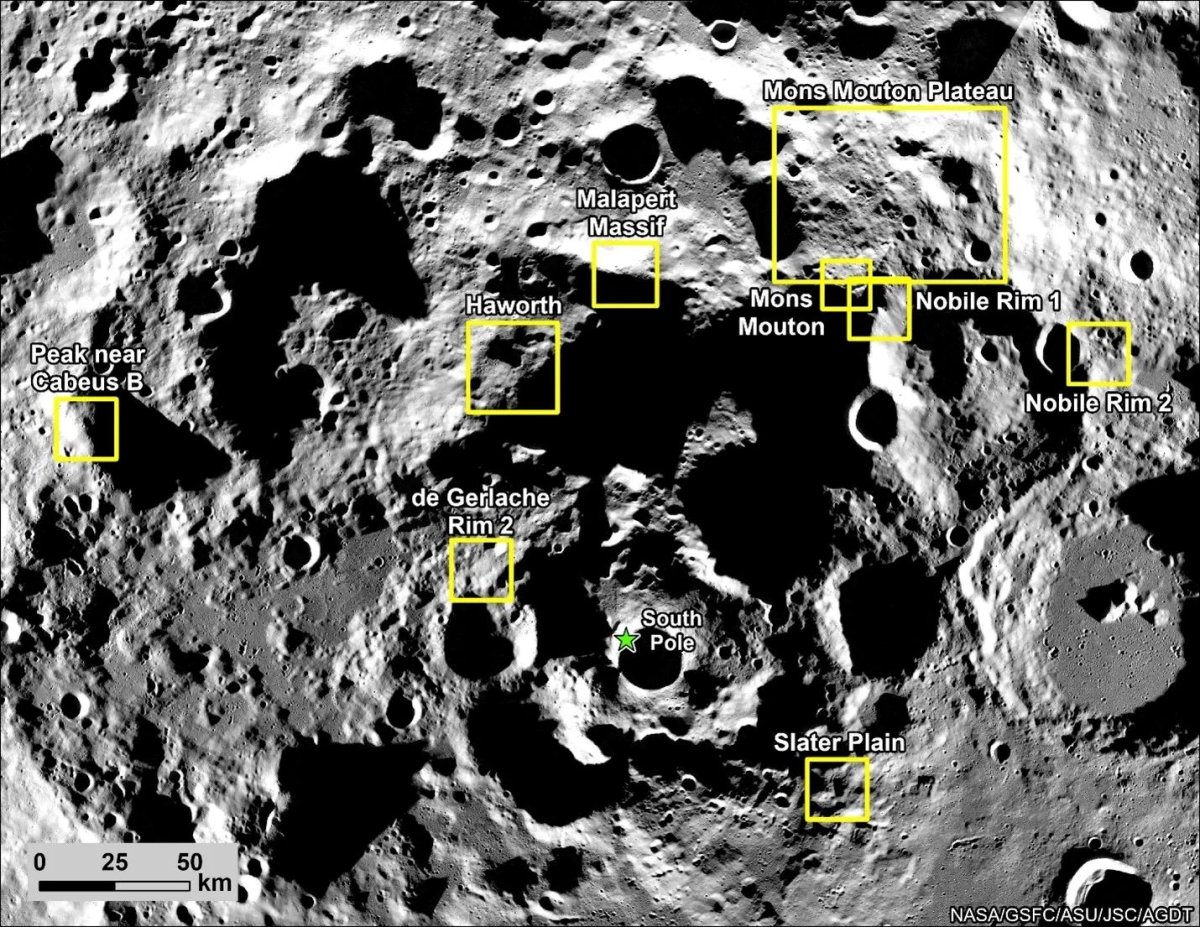NASA has unveiled nine potential landing regions near the moon's South Pole for the Artemis III mission, marking the first crewed lunar landing in over 50 years.
These regions, all uncharted by human exploration, will undergo detailed scientific and engineering analyses to assess their suitability for the historic mission.
Set for launch as part of NASA's Artemis program, the mission aims to establish the foundation for sustainable lunar exploration.
The targeted regions represent an intentional shift from previous lunar landing sites, offering new scientific possibilities in areas where unique geological features, permanently shadowed zones, and possibly preserved lunar resources, such as water, could reveal critical insights.
"Artemis will return humanity to the moon and visit unexplored areas," Lakiesha Hawkins, assistant deputy associate administrator, Moon to Mars Program Office, said in a statement.
"NASA's selection of these regions shows our commitment to landing crew safely near the lunar South Pole, where they will help uncover new scientific discoveries and learn to live on the lunar surface."

Artemis III Launch Date
Artemis III will launch no earlier than September 2026, according to NASA. The mission will last around 30 days and will take two astronauts near to the South Pole of the moon for approximately a week.
The region characterized by ancient terrain and cold, shadowed areas that could harbor water and other compounds.
"The moon's South Pole is a completely different environment than where we landed during the Apollo missions," Sarah Noble, Artemis lunar science lead at NASA headquarters, said in a statement.
"It offers access to some of the moon's oldest terrain, as well as cold, shadowed regions that may contain water and other compounds. Any of these landing regions will enable us to do amazing science and make new discoveries."
NASA's Cross Agency Site Selection Analysis team has collaborated with science and industry partners to refine the list of landing candidates. The team analyzed data from NASA's Lunar Reconnaissance Orbiter, factoring in science potential, launch windows, terrain suitability, communication with Earth, and lighting conditions.
The final selection also considers the capabilities of NASA's rocket, the Orion spacecraft with astronauts on board, and the Starship Human Landing System, which will get them to the surface, to ensure safe and accessible landings.
Artemis II Launch Date
Before landing people on the surface of the moon, the Artemis II mission, which is scheduled for launch no earlier than September 2025, will be the first crewed mission to the moon in the Artemis program.
The voyage will take four astronauts on a 10-day flight around the moon, demonstrating a range of capabilities NASA says are needed for deep-space missions.
The four person crew has already been selected for Artemis II. Christina Koch, Victor Glover, Reid Wiseman and Canadian Space Agency Astronaut Jeremy Hansen will all be onboard.
Engineering and Science Considerations
The complexity involved in finding the optimal landing site for Artemis III is not to be underestimated.
"Finding the right locations for this historic moment begins with identifying safe places for this first landing and then trying to match that with opportunities for science from this new place on the moon," Jacob Bleacher, NASA's chief exploration scientist, said in a statement.
Each region offers unique characteristics, such as diverse geological formations and access to sunlight, which are critical for mission availability. In addition, NASA will continue to survey the South Pole for future missions, potentially expanding beyond the initial nine regions as the Artemis program progresses.
Do you have a tip on a science story that Newsweek should be covering? Do you have a question about the Artemis missions? Let us know via science@newsweek.com.




















 English (US) ·
English (US) ·